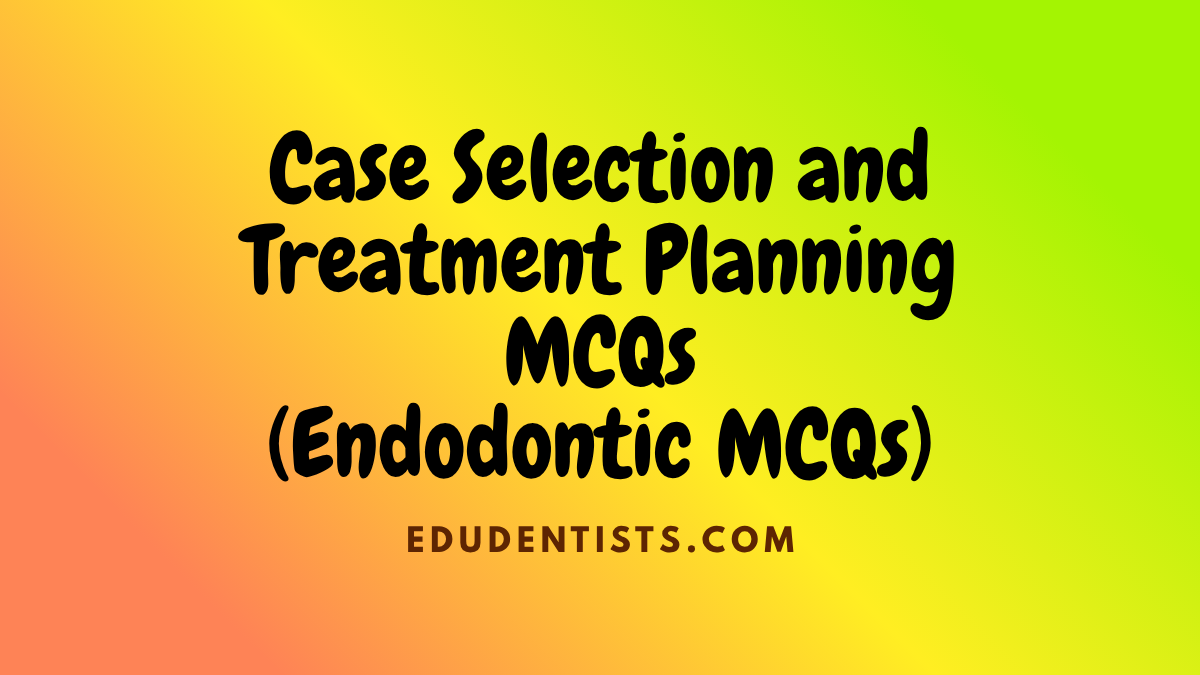
Case Selection and Treatment Planning MCQs _ Endodontic MCQs
Case Selection and Treatment Planning MCQs _ Endodontic MCQs
- Antibiotic prophylaxis is suggested for patients with a history of which of the following:
A. Coronary bypass surgery
B. Atrial fibrillation
C. Artificial heart valve replacement
D. Myocardial infarction
E. Rheumatic fever - Elective endodontic treatment is contraindicated in which of the following situations
A. Patient is a borderline diabetic.
B. Patient has had a heart attack within the past 6 months.
C. Patient has had numerous opportunistic infections secondary to infection with the human immunodeficiency virus (HIV).
D. Patient has an implanted pacemaker. - Which of the following describes the preferred management of internal resorption:
A. It is untreatable.
B. It requires surgical treatment.
C. It requires antimicrobial intracanal medication.
D. It usually requires root canal treatment. - Patients who are HIV positive
A. Cannot transmit the virus through a needle stick
B. Are best treated in a hospital environment
C. Do not have a higher risk of postoperative pain
Explanation: Refer to page 84
D. Have been shown to heal less predictably after endodontic therapy - Which of the following statements about one-appointment root canal treatment on teeth with vital pulps is accurate
A. It is best performed in association with trephination or root-end surgery.
B. It may predispose the patient to postoperative flare-ups.
C. It is just as successful as multiple-appointment root canal treatment.
D. All of the above - For a surgical procedure in patients undergoing anticoagulation therapy, the dosage generally should be:
A. Increased (possibly doubled)
B. Decreased (approximately halved)
C. Discontinued 2 days before the surgery and resumed immediately afterward
D. Left unchanged - Endodontic treatment is contraindicated in which of these situations
A. The patient has no motivation to maintain the tooth.
B. The canal appears to be calcified.
C. A large periapical lesion is present.
D. The tooth needs periodontal crown lengthening before restoration. - The safest period to provide dental care during pregnancy is which month(s):
A. First
B. Second and third
C. Fourth to sixth
D. Seventh and eighth
E. No period during pregnancy is safe. - Which of the following is a preoperative finding that predisposes to a less optimistic prognosis (i.e., lower success rate):
A. Tooth is in hyperocclusion.
B. Pulp is vital.
C. Pulp is necrotic, but no periradicular lesion is present.
D. Pulp is necrotic, and a periradicular lesion is present.
E. Patient is an elderly individual.